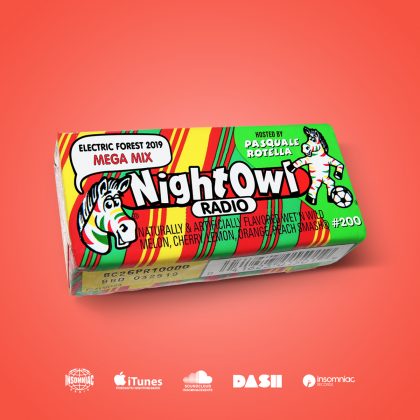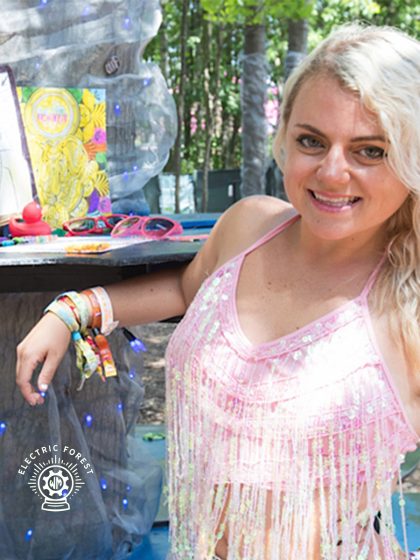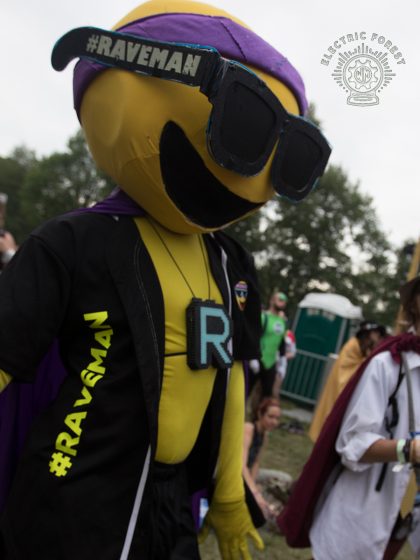Imagine Nation Knows No Bounds
The Imagine Nation crew isn’t difficult to pick out of a crowd: They’re the dudes with the long hair, easy smiles, and clothing that looks more Burning Man than bottle service.

Composed of seven guys and five women, Imagine Nation is a Los Angeles-based artist collective forged in the West Coast underground festival circuit throughout the past five years. Members first met at a Utah festival called Desert Rocks and have since traveled the country creating immersive stages from recycled materials largely sourced from landfills. When they’re not on the road, most of them live together in a sprawling hillside compound of early 20th-century cottages on L.A.’s eastside. Basically, everything about what they’ve got going on is fundamentally charming.
On a sunny Friday morning at the compound, the men of the crew—Zach Dragovich, Clark Treese, Kirill Simenchik, John Ripley, Prescott McCarthy, and two guys who introduce themselves simply as Switch and Danger—contemplate the fact that they’re about to build their biggest stage ever at EDC Orlando, which is less then two weeks away.
Spaces they’ve previously built have accommodated a few hundred people. Their stage in Florida will house more then 7,000. The guys are wondering if they’ll be able to make the leap in size while maintaining the artistic vibe and sense of community that is at the core of what they do.
It is a time of growth for Imagine Nation in more ways than one. They recently split off from their first group, The Jenkstars, and became their own entity. They now function as a co-op and aspire not simply to be stage builders, but to evolve into a multimedia company focused on art, film, and sustainably built permanent structures. After EDC Orlando, they’ll drive to New Orleans to rebuild houses in the city’s ninth ward.
This isn’t the first work they’ve done for Insomniac. Imagine Nation recently built stages at Nocturnal Wonderland (the Upside-Down Room for the Mad Hatter’s Tea Party); Beyond Wonderland Bay Area (a B-Boy block party streetscape centered around the Boombox art car); and Escape: All Hallows’ Eve (the Bayou Voodoo Mansion, complete with tarot card readings).

These areas have had a vastly more renegade feel than the rest of the stages—a vibe due in no small part to the fact that they were built completely from recycled materials. While the group is given a rough idea for the theme of their area, the final product is largely dictated by the stuff they’re able to gather and build with.
“It’s pretty much always like, ‘How are we going to do this?” says McCarthy. “Then it’s like this Jedi force and focus of manifestation that brings everything to us. Whether it’s on a street corner or a dumpster or a back alley or some guy on Craigslist, we’ve yet to fail to find the materials needed.”
This resourcefulness was initially based as much on financial limitations as it was on their aspiration to made environmentally friendly art. “Trash is a necessity when you don’t have money,” says Ripley. “Then you start building, and you realize just how much trash there is out there. We know there’s lumber that’s been thrown out and is just going to go float in an island somewhere if we don’t use it.”
“Our hearts hurt going to Home Depot,” McCarthy adds.

The nature of the materials gives these creations a rootsy, scrappy feel akin to the people who make them. “Each reused piece has its own life force,” says Dragovich. “It gives things a lot of character, and your final project has this end magic that you just can’t get from buying materials.”
The crew then uses their finished space as a playground to create an immersive world, populated by characters they embody throughout the festival. At Beyond they were B-boys and girls; at Nocturnal they were mad tea-partiers; and at Escape they were voodoo queens and kings. This breaks down barriers between performers and fans and makes each area less a stage and more an experience that stays with people long after they have left.

This type of environment first jelled at Michigan’s Electric Forest in 2013 when the crew was given creative control over an area of the festival’s Sherwood Forest. Here, they built a saloon, a speakeasy, a trading post, and a stage that featured stellar musical performances not on the official schedule. They gave dance lessons, organized a flash mob, and hosted a talent show with performances so touching that they made one reporter cry.
Laying a foundation for such meaningful interaction is a primary goal of Imagine Nation. And while they were initially hesitant to partner with such a large corporation, by working with Insomniac, they see an opportunity to, as McCarthy says, “have a larger voice, interact with more people and remind people why they’re there, which is community.”
The question with Orlando is how to foster community when dealing with such a massive crowd. “This is one of our most challenging events, in the sense of how we’ll still give it an interactive feeling when it becomes so big,” says Simenchik.

They’re up to the challenge, though, as they see the possibility of positively affecting youth culture on a mass scale.
“These events are hundreds of thousands of people coming together at one time to experience pure happiness and bliss,” says McCarthy. “You can go in the direction of partying and raging and raving and then it’s over, or you can go in the direction of being a community and using that to better the planet. Let’s think past just the party.”
Follow Imagine Nation on Facebook | Instagram





